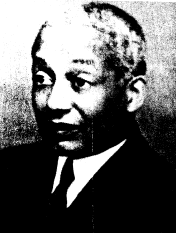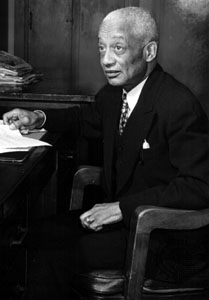


`
(1886-1954)
The Harlem Renaissance was one of the greatest social movements in black history. It showed America a side of Harlem and the black culture that remained hidden through the 19th and early 20th century. This social and cultural advancement embodied art, music, and literature. One of the most prolific literary and public figures of the time period was Alain Locke. His influence to the Harlem Renaissance as a writer, a public figure, and a businessman were crucial to the publication and ramification of the era.
Born September 13th
in Philadelphia Pennsylvania to Pliny Ishmael Locke a prominent lawyer, and Mary
Hawkins a teacher and member of the Felix Alder Ethical Society, Locke was
brought into a comfortable environment. He graduated from Central High School
and the Philadelphia School of Pedagogy in 1904. That same year he entered as an
undergraduate at Harvard. After graduating with much success in 1907 he became
the first African American Rhodes Scholar, at Hertford College, Oxford. When he
returned to America he became one of the most important figures of the time
period, he “stimulated and guided artistic activities and promoted the
recognition and respect of blacks by the total American community.” (Butcher 1).
In 1925 he began to publish what would be later known as The New Negro a
magazine containing an anthology of fiction, poetry, drama a nd
essays.
nd
essays.
Furthermore Locke edited the Bronze Booklet a study of cultural achievements for blacks. For almost two decades he annually reviewed literature written by and about blacks in the magazines Opportunity and Phylon. Locke’s most famous works include Four Negro Poets (1927), Frederick Douglass, a Biography of Anti-Slavery (1935), Negro Art--Past and Present (1936), and The Negro and His Music (1936). Through these works he suggests and advocated one of his strongest inferences, that “defining the artistic connection to Africa would be an important step in defining African American culture,” (Kwuame 512). Locke also wrote an essay leading up to World War I and republished again before World War II, it was called Moral Imperatives for World Order and includes his beliefs of the social and cultural guidelines of the modern world. back
In this essay Locke strays from the ideas of promoting the black culture and focuses intently on the ideas of culture and society in the face of war. His initial comment touches upon loyalty among nations and more importantly among society. He points out that in the past loyalty to one another was the staple backbone supporting men, but in today’s world loyalty is no longer strong enough to compensate for a global society. A stronger and more understanding virtue is needed. He speaks of how loyalty has been misused and now transforms into nationality. However, this nationality although containing the potential to be positive has been corrupted by the heart of man into irresponsible national sovereignty. Society as a whole must give up and erase such strict yet illogical sovereignty if it wishes to live without war. Locke makes note that the world has regressed to consider itself a tribal like mass, but must move forward and consider itself a cultural brotherhood. This indirectly illustrates his cultural philosophies of the Harlem Renaissance.
 Literary works such as Alain Locke’s played a huge role in exposing the Harlem
Renaissance to the public. Magazines such as The New Negro were filled
with essays and works of literature. These magazines were read by all of
American culture be it black or white, thus the ideas and the philosophies of
black writers were being exposed to the American public. Through these works the
white culture gained more respect and esteem for the black culture then ever
before.
Literary works such as Alain Locke’s played a huge role in exposing the Harlem
Renaissance to the public. Magazines such as The New Negro were filled
with essays and works of literature. These magazines were read by all of
American culture be it black or white, thus the ideas and the philosophies of
black writers were being exposed to the American public. Through these works the
white culture gained more respect and esteem for the black culture then ever
before.
The Harlem Renaissance conveyed the ideas and showed the abilities of an American culture left in the dark, left to be judged by bigots and left to fend for themselves. Fueled by great African American intellects like Alain Locke the Harlem Renaissance epitomized the capabilities of a culture handicapped by prejudices and racism. back